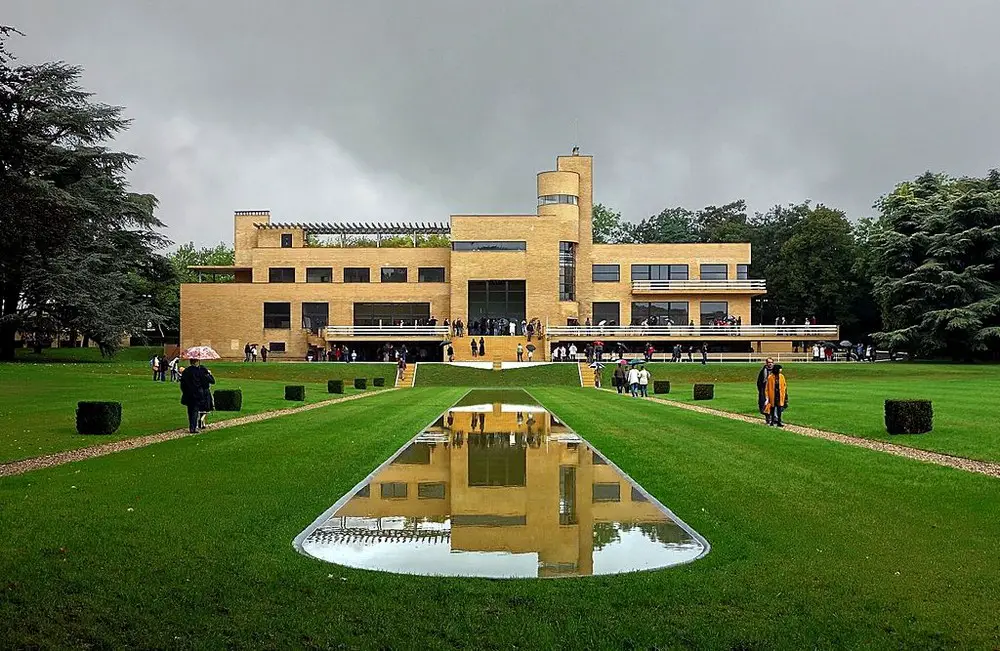Villa Cavrois Photos, 20C architect designer, Modern French house restoration pictures, Croix home
Villa Cavrois – House by Robert Mallet-Stevens
Robert Mallet-Stevens Building in Northern France: Modern Architecture in Croix
20 Jul 2016
Villa Cavrois: The Revival of a Masterpiece of Modern Architecture
Location: Croix, Lille, Northeast France
The 1930s French Villa Cavrois, a key piece of modernist architecture, almost disappeared. Take a tour of its now lovingly restored rooms.
Article first published on Houzz
Villa Cavrois by Robert Mallet-Stevens
Few stories are like those of Villa Cavrois, a masterpiece of modern architecture designed by Robert Mallet-Stevens for wealthy industrialist Paul Cavrois in northern France. The 1932 “modern castle” was a home ahead of its time thanks to the pioneering vision of Mallet-Stevens, a great rival of Le Corbusier in the early years of the 20th century.
The villa’s golden years were the 1930s. Later, during World War II, the Germans used it as a barracks. After the war, it was divided into two apartments for the Cavrois family. In the 1980s, following the death of Lucie Cavrois, Paul’s widow, the villa was sold to a real estate developer, its furniture was dispersed, and the home fell into decay.
Villa Cavrois’ miraculous revival was due to a handful of committed residents and architects, who pressured the state into purchasing and restoring it. The subsequent restoration cost some €23 million (more than £18 million), and involved a meticulous reconstruction that lasted almost 12 years. Finally, in June 2015, the restored villa was opened to the public.
Take a tour of this unique example of modernist architecture below.
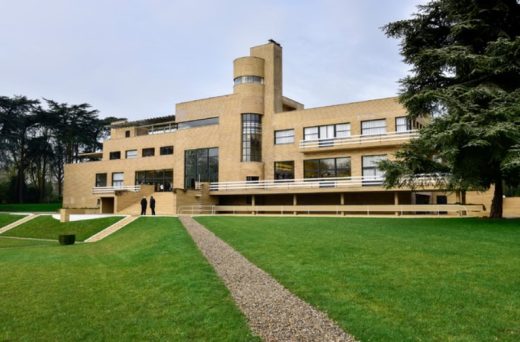
Photo by Virginie Rooses Photographe – Search contemporary exterior pictures
“The role (of buildings) is not only to make life happy and enjoyable through their beautiful appearance, but also to let those who stop to gaze at their proportions and the harmony of their forms glimpse a touch of joy and perfection.”
– Robert Mallet-Stevens
Villa at a Glance
Who lived here Paul Cavrois (a wealthy industrialist with five textile factories in the area employing 700 people), his wife, Lucie, and their seven children moved into this villa surrounded by a massive park in 1932. Local residents and the closed circle of northern industrialists, shocked by the couple’s audacity, nicknamed it the “yellow cruise liner”, “the yellow peril” and even “Cavrois’ folly”
Location The affluent town of Croix, near Roubaix, in northern France
Period of construction 1929 to 1932
Size 3,800 sq m, including 1,840 sq m of living space and 830 sq m of terraces – 60m long for the main facade – plus 17,600 sq m of park
Architects Design and conception: Robert Mallet-Stevens. Renovation: Michel Goutal, chief architect for historical monuments, and his colleague, Béatrice Grandsard
Renovation of the park Aline Le Cœur, landscaper
Period of renovation: 2003 to 2015
Cost of renovation €23 million (around £18 million)
That’s interesting When the villa was bought by the French State in 2001 and the plan for its renovation began to take shape, there were neither records nor plans of the building remaining, because Mallet-Stevens requested in his will that all of his records be burned. All that remained were a few good-quality photos taken from the book Une Demeure 1934, which the architect published at his own expense after Villa Cavrois was built. The restoration is based on these visual records and the work of a team of archaeologists and architects.
Hall and living room
Visitors enter the villa through a massive glazed opening, which leads to a half hall, half living room in the shape of a cube.
The walls are decorated in soft green, reflecting the nuances of the park, which are present in the house through large paintings depicting the four seasons. “My grandfather wanted to live in the countryside and enjoy his garden. Here … wherever you are sitting, you are in the garden,” says Christine Jouret, Paul Cavrois’ granddaughter.
Tour another 1930s architectural masterpiece, Eltham Palace in southeast London
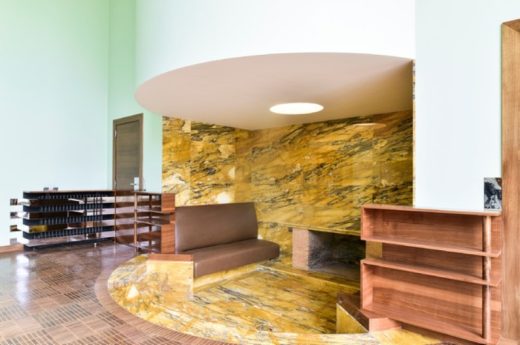
Photo by Virginie Rooses Photographe – Browse contemporary living room ideas
Opposite the entrance, the large room has a spectacular fireplace. The family welcomed guests in this more intimate setting paved with yellow Siena marble. Generally, the reception rooms are simple, without unnecessary ornament, consistent with the functional spirit of the modernist style.
The room was once decorated with furniture designed by Mallet-Stevens. The Centre des Monuments Nationaux (which conserves and restores historic buildings and sites) attended a large sale at Sotheby’s in December to buy back some of the villa’s original furniture. Thus, the walnut armchairs and tables that once graced the large living room will soon return to their rightful place.
The parquet that covers the floor of this room was badly damaged when the villa was vacant. Jadoul, the Belgian company that laid the floor in 1932, had to restore more than 90% of it. Grouted with tinted, magnesium-based cement, it stands up to heavy traffic.
Check out more ways to use parquet flooring
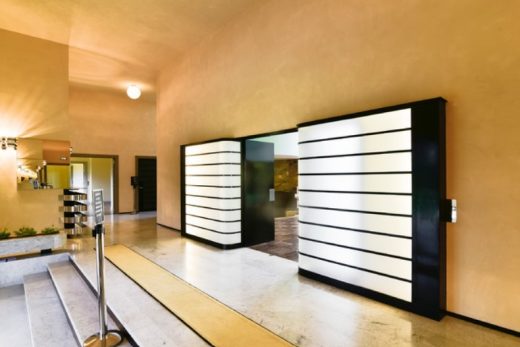
Photo by Virginie Rooses Photographe – Discover contemporary entrance design inspiration
Vestibule
In the lobby, two light boxes frame a black door. They remind us that Mallet-Stevens also designed many film sets. This contrasting of black and white was favoured by the architect and can be seen in many of the rooms throughout the villa.
The cast-iron radiators in the hallway are framed with industrial-looking chrome strips. The metal strips, designed by Jacques Le Chevallier, were reproduced from three originals that were bought back for the villa on the art market.
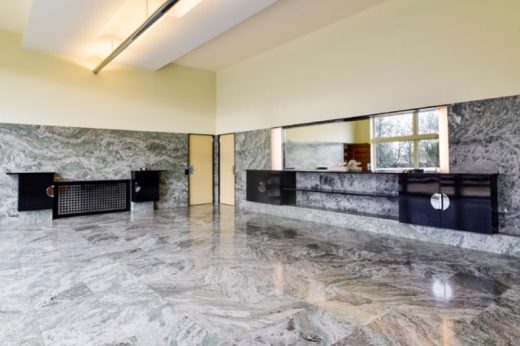
Photo by Virginie Rooses Photographe – Look for contemporary dining room pictures
Dining room
Swedish green marble covers the floor and walls of the parents’ dining room. Marble was imported from the original quarry, still in service, to find the same veins.
Unprecedented work on artificial lighting was carried out during the building of this avant-garde house by lighting engineer André Salomon. On the ceiling in this room are two reflector staffs that allow for indirect lighting.
The mirror on the wall opposite the window boosts the light and offers views of the garden when facing away from the window.
Don’t have a dining room on this scale? Discover ways to sneak a dining table into a tricky space
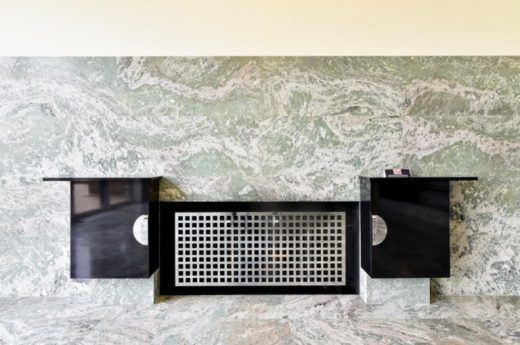
Photo by Virginie Rooses Photographe – Browse contemporary home design photos
The furniture designed by Mallet-Stevens, a proponent of “total architecture”, was removed from the home in 1987 following the villa’s sale. Major efforts have been made to find the furniture, purchase it, and restore it to its original state.
The villa’s furnishings were designed in a functionalist spirit, as evidenced by the dining room pieces, created with blackened and varnished pear wood. The geometric lines of the chromed metal cladding conceal the radiator.
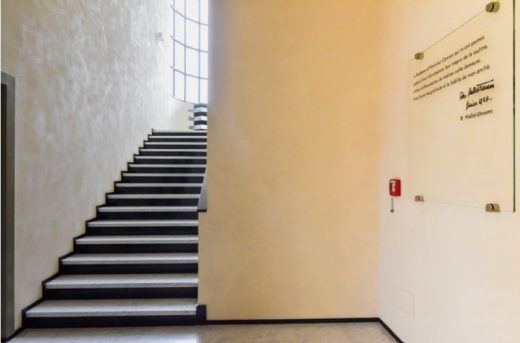
Photo by Virginie Rooses Photographe – Look for contemporary staircase pictures
Staircase
The hall leads to a black-and-white staircase. The lift, designed by architect Jean Prouvé, travels from the basement to the roof terrace.
Discover thousands of staircase designs on Houzz
A plaque commemorates the dedication of Mallet-Stevens to the owners of his work: “To Mr and Mrs Cavrois, who have allowed me, through their foresight, their defiance of routine and their enthusiasm, to create this house. With my gratitude and my loyal friendship.”
The furniture – made with painted metal, one of the most popular materials of the modernist era –hugs the rounded wall. It was graciously returned by an American donor.
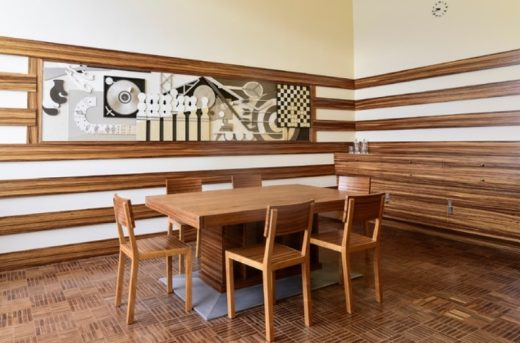
Photo by Virginie Rooses Photographe – Search contemporary dining room pictures
Children’s dining room
This dining room is furnished with zebrawood pieces. It has been reconstructed based on black-and-white photos from Mallet-Stevens’ book. One of Paul Cavrois’ twins, Brigitte, was visiting the renovation site one day. Entering the children’s dining room, she saw the bas-relief, by French sculptors the Martel brothers, and said, “I recognise this frieze, but it used to be in colour!”
The fresco evokes leisure activities, such as listening to records, bowling and playing darts, tennis and draughts.
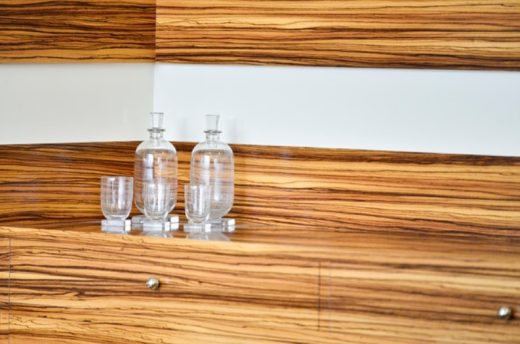
Photo by Virginie Rooses Photographe – Browse contemporary home design ideas
Zebrawood, better known as zebrano, is a type of wood native to central Africa. It is light yellow and veined with numerous fine dark brown lines.
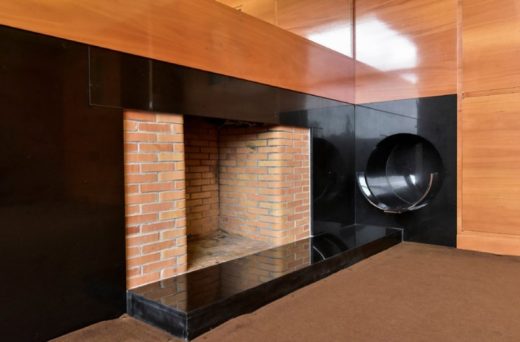
Photo by Virginie Rooses Photographe – More contemporary living room photos
Paul Cavrois’ office
Paul Cavrois’ home office has walls lined with painted and varnished pearwood, which frame a large fireplace.
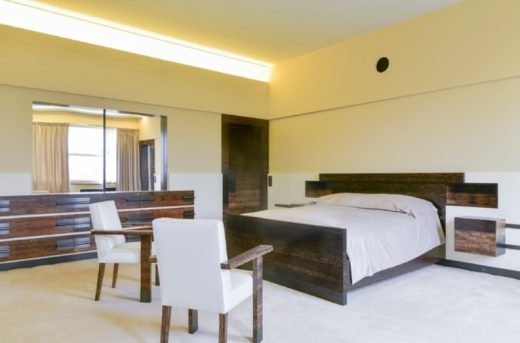
Photo by Virginie Rooses Photographe – Search contemporary bedroom pictures
Master bedroom
Paul and Lucie Cavrois’ room has regained its original dark furniture and light colours, once again bringing back the two-tone theme frequently found throughout the villa.
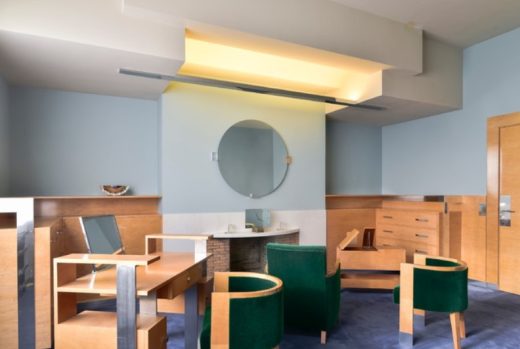
Photo by Virginie Rooses Photographe – Look for contemporary home office and library design inspiration
Lucie Cavrois’ dressing room
Damaged by fire during the period when the house was occupied by squatters, this dressing room has regained its splendour – with sycamore furniture and a dressing table with aluminium stands signed by the architect. These furnishings had been purchased by private collectors and were bought back through sales.
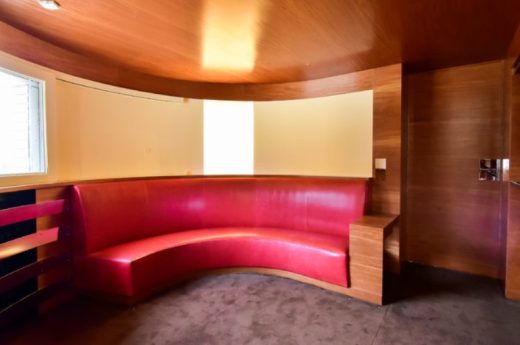
Photo by Virginie Rooses Photographe – Browse contemporary home design ideas
Smoking room
While this smoking room’s furniture could not be found, it was rebuilt faithfully to the original specifications.
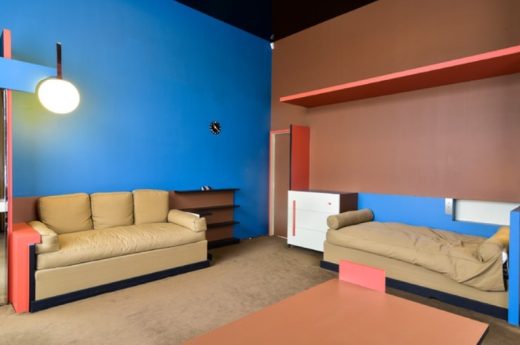
Photo by Virginie Rooses Photographe – Browse contemporary bedroom photos
Child’s bedroom
The same is true for the furniture in this child’s bedroom, located upstairs. The room’s style is inspired by the Dutch De Stijl modern art movement, with its bright colours, polychrome furniture and black varnished ceiling.
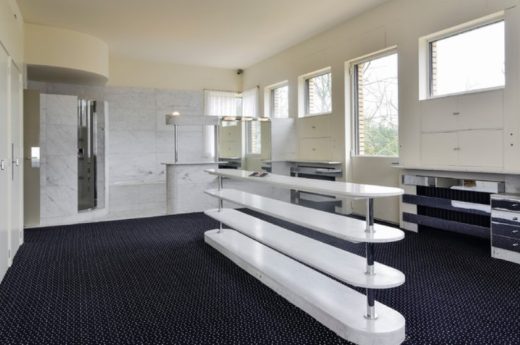
Photo by Virginie Rooses Photographe – Search contemporary bathroom design ideas
Master bathroom
While all the rooms in the house are rather spectacular, one of them, the master bathroom, is particularly unusual. It’s extremely spacious – more than 47 sq m – and is clad in Carrara marble. By itself, this room fully expresses the extravagance of the villa and the importance its occupants gave to hygiene.
The round ceramic shower was highly modern for its time. To its left is a scale, embedded in the wall.
Even the master bathroom had functionalist furniture.
Everything down to the taps has been restored to its original specifications.
Kitchen
The kitchen is located on the same floor as the reception room and has the same layout, traversed by large bay windows opening onto the garden and entrance. This is highly unusual since, at that time, utility rooms (and the people who worked in them) were often relegated to basements without windows.
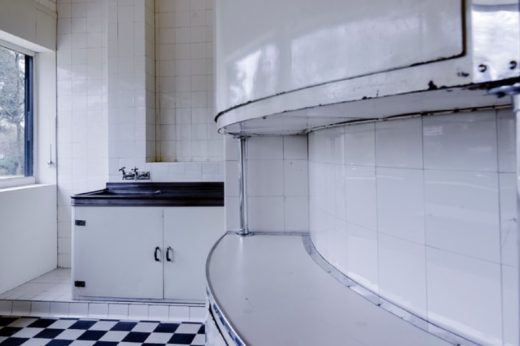
Photo by Virginie Rooses Photographe – More contemporary kitchen photos
According to the hygienic standards desired for the house, the kitchen was designed to be fully white, like a hospital. The only exception is this black-and-white chequered stoneware floor.
The enamelled steel furniture is perfectly integrated and hugs the rounded wall. A generous American donor, having saved and preserved it, returned it to its place of origin.
The kitchen table, also designed by Mallet-Stevens, is a survivor; it was found in the basement. It’s the only piece of furniture that hasn’t left the house since 1932.
Next to it, we can see new editions of Mallet-Stevens’ lacquered steel chair, first manufactured by Tubor in 1930. Tubular and stackable, the chairs are easy to carry. This emblem of functionalist furniture was a real novelty at the time.
A work of memory
“What will we do with the container filled with pieces of the house that were kept?” asked Elisabeth Porté, who was responsible for the inventory of the artefacts. Given there were no plans or archives of the house still remaining, it was decided they would keep and exhibit some of the objects in the huge wine cellar, like a piece of the house’s memory, to recall the research methods that were employed.
Thus, the old compartments play a new role as display windows. This is the first time a section dedicated to conservation has been created inside a modern house, and this room is, in fact, very popular with visitors.
The old electrical panel has also been preserved in the former wine cellar that serves as a materials library.
In the same spirit of memory, one of the boys’ upstairs bedrooms was left as is, to testify to the decay of the villa, under the direction of its administrator, Paul-Hervé Parsy.
In fact, Parsy, current administrator of the Villa Cavrois, was passionately involved in the movement to save this unique building. “By February 2016, we had already reached 100,000 visitors,” he says. Original estimates had been for 35,000 visits for the first year. The determination of those who nursed this house back to health has not been in vain.
Robert Mallet-Stevens Architect
Address: Villa Cavrois, 60 Avenue du Président John Fitzgerald Kennedy, 59170 Croix, France
Phone: +33 3 20 73 47 12
Vue arriere de la villa Cavrois à Croix, Nord:
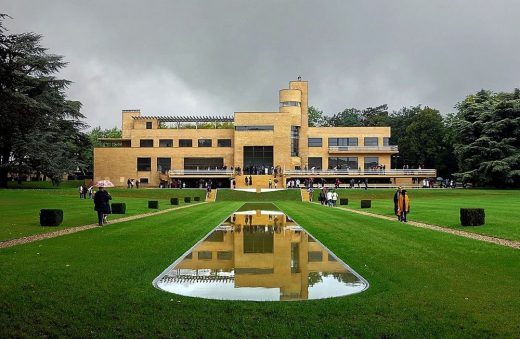
photo from wikimedia commons, Author: Under~frwiki at French Wikipedia
Location: 60 Avenue du Président John Fitzgerald Kennedy, 59170 Croix, France
New Paris Architecture
Contemporary Paris Architecture
Paris Building Designs – chronological list
Paris Architecture Tours by e-architect
New French Buildings : current, chronological list
Modern French House
Villa Savoye, Poisse (Poissy-sur-Seine), near Paris, France
Design: architect Le Corbusier
Date built: 1931
Villa Savoye, France : photos of this famous Villa Savoie by Le Corbusier by architect Le Corbusier.
Paris Architecture – Building Selection
Comments / photos for the Villa Cavrois: House by Robert Mallet-Stevens Architect, France page welcome

